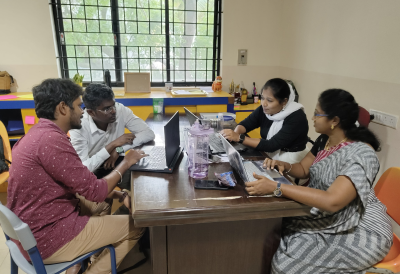By Jannathul Firthous, MYP Coordinator, Gateway International School, Chennai, India

What happens when inquiry-led learning meets the structured demands of national and international syllabi? At Gateway International School, we explored this question through action, not theory. As a continuum school offering the MYP, we set out to ensure that our learners build strong inquiry skills and global perspectives, while confidently navigating academic requirements from frameworks like CBSE, IGCSE, and GCSE.
Listening to our community
Parents sought assurance: “Are our children covering key content areas required by national or international boards?”
Teachers asked the tough questions: “Where does our curriculum align? Are we missing anything?”
These questions shaped our mission. We set out to align academic expectations across systems, while staying true to MYP’s core — conceptual learning, inquiry, and skill development.
Designing the journey
We developed a curriculum matrix that mapped concepts, skills, and content across CBSE, IGCSE, GCSE, and MYP for Grades 6–10. This visual tool revealed intersections, content gaps, and opportunities for deeper enrichment. It brought clarity and sparked critical discussions.
Our approach stayed grounded in the MYP framework and its standards and practices. The matrix did more than track alignment — it served as a living document, guiding teachers to retain MYP’s identity while integrating essential content. We also used backward planning from the Diploma Programme to build a strong bridge between MYP and DP, ensuring coherence across the continuum.

Facing the tensions
Two major tensions emerged: philosophical and structural.
MYP is built around inquiry, big ideas, real-world relevance, and learner agency. Students explore concepts like systems and change through authentic questions, interdisciplinary connections, and their own curiosity. They take ownership of their learning through choice, reflection, and voice.
National frameworks often emphasize structured syllabi, content-heavy chapters, and standardized exam formats. Teachers are expected to move fast, cover everything, and prepare students for high-stakes assessments.
Balancing these approaches creates friction. Teachers expressed concerns about increased workload and limited room for creativity. The fear wasn’t about alignment — it was about losing the freedom to teach with depth and meaning.
We addressed this through collaboration. Starting with one grade, one subject, and one team, we shared ideas, tried out plans, and made room for honest conversations. The matrix helped teachers see connections and reduce redundancy. Slowly, innovation began to grow.
Shaping new possibilities
Alignment became a platform for creative planning. Teachers brought fresh ideas to the table.
- Grade 9 Biology students studied genetics by investigating CRISPR and debating the ethics of genetic engineering. They met syllabus goals and explored real-world dilemmas.
- English Literature classes analyzed Animal Farm while discussing global contexts like media control and political power. Literary analysis blended with relevant current events.
- A Science-Design interdisciplinary project combining CBSE pollution content with MYP design thinking. Students created prototypes of low-cost air filters using local materials.
- In Humanities, students developed research skills while examining historical governance systems. They practiced source evaluation while engaging with national history.
Across these examples, students stayed rooted in MYP philosophy. They asked questions, explored meaning, and connected learning with their world.

Leadership through collaboration
Change began with conversation. As a coordinator and science facilitator, I started with what I knew. My team and I built a shared understanding. From there, we expanded — one step, one subject, one victory at a time.
Regular planning sessions and shared resources create momentum. The matrix became our anchor — a structure that supported both alignment and creativity. The teacher's voice shaped the process. Trust made it sustainable.
Practical insights
- Start small and stay focused.
- Use tools like the matrix to make alignment visible and manageable.
- Empower teachers to lead. Collaboration creates solutions.
- Focus on integration, not addition. Connections build depth.
The impact
Our students now experience a curriculum that meets academic standards and nurtures their wellbeing. Integrated planning reduces content duplication and streamlines learning. This lowers cognitive overload and supports balance — a key principle of MYP design.
Students engage with clarity and purpose. They take ownership, reflect deeply, and apply knowledge in meaningful ways. Alignment has created room for voice, agency, and confidence to grow.
Through thoughtful collaboration, we built a curriculum that connects worlds. Not through compromise — but through synergy. Our learners move forward prepared not only for exams, but for life.


